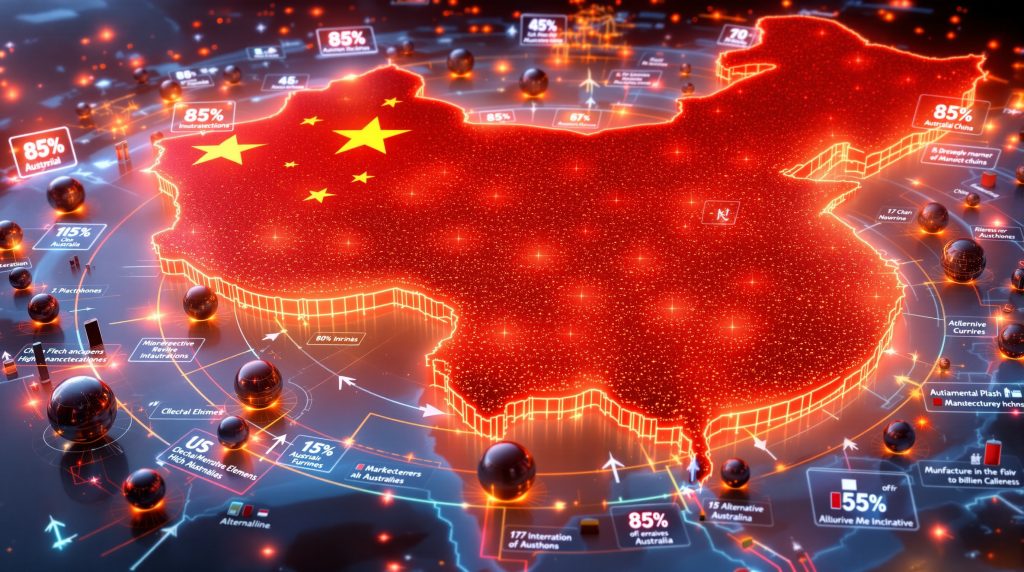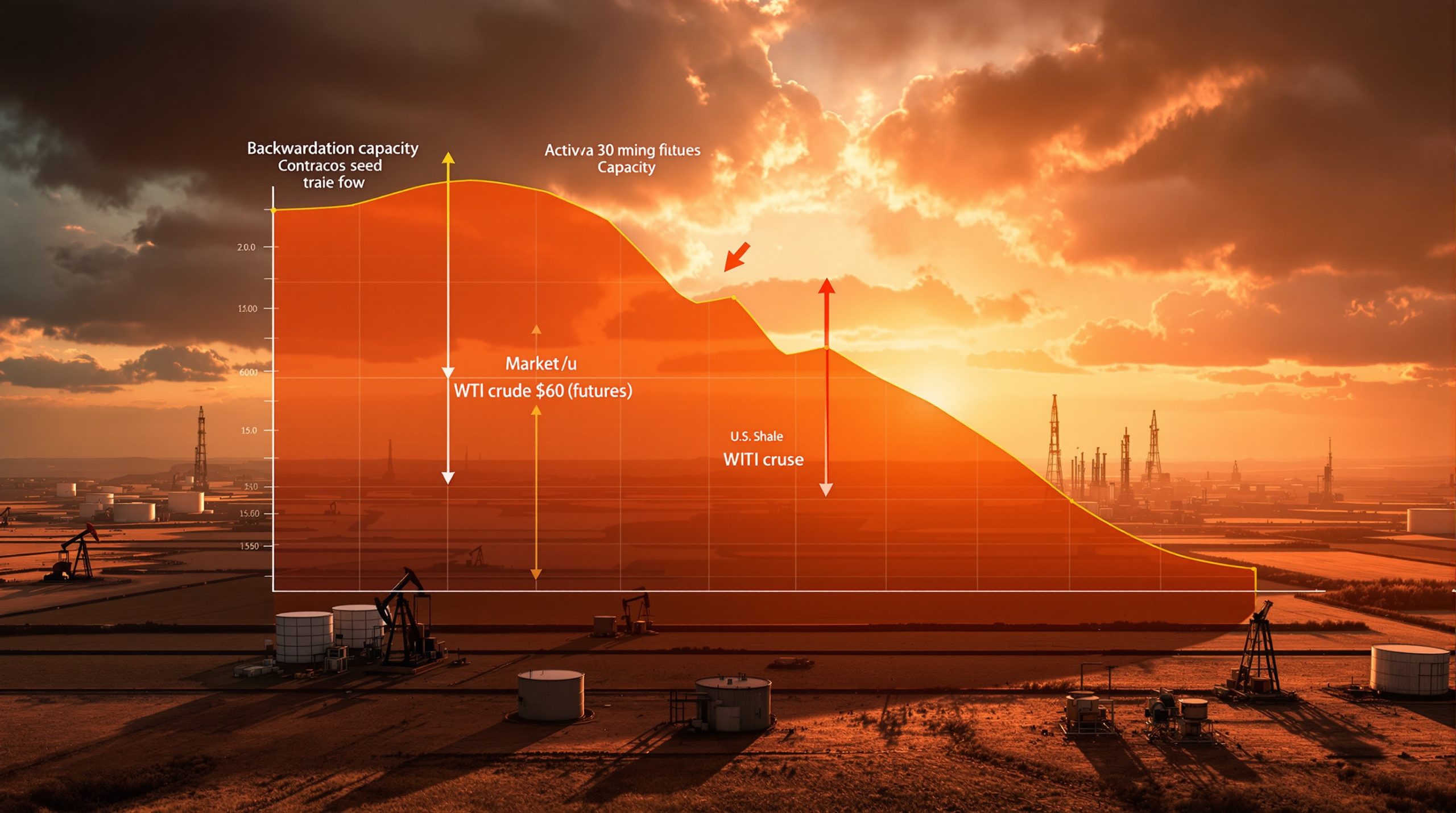China's Rare Earth Dominance: Global Supply Chain Vulnerabilities
What Are Rare Earth Elements and Why Do They Matter?
Rare earth elements (REEs) comprise a group of 17 metallic elements on the periodic table with unique magnetic, luminescent, and electrical properties that make them irreplaceable in many advanced technologies. Despite their name, most REEs are relatively abundant in the Earth's crust – the "rare" designation stems from their dispersed nature and the complex processing required to extract them.
These elements form the backbone of our modern technological world. Neodymium, praseodymium, and dysprosium create permanent magnets essential in electric vehicle motors, wind turbines, and defense systems. Europium, terbium, and yttrium enable vibrant colors in displays and LED lighting. Lanthanum and cerium serve as catalysts in petroleum refining and emissions control.
The strategic importance of REEs extends far beyond their modest $10-12 billion annual market. They represent critical chokepoints in supply chains worth trillions of dollars, from consumer electronics to military hardware. The International Energy Agency projects minerals demand surge to increase 300-500% by 2040, driven primarily by clean energy technologies and digitalization.
"These materials may be small components of finished products, but they're absolutely essential to functionality," notes industry analyst Ryan Castilloux. "You simply cannot build a modern economy without secure access to these elements."
How Did China Achieve Near-Monopoly Status?
China's dominance in rare earths didn't happen by accident. It represents the culmination of decades of strategic planning beginning in the 1980s under Deng Xiaoping's leadership. Recognizing their potential value, Deng famously remarked: "The Middle East has oil, China has rare earths."
Through substantial government investment, China systematically developed expertise across the entire value chain—from mining and processing to manufacturing final products. This long-term approach contrasted sharply with Western policies, which often prioritized short-term profitability over strategic resource security.
By the early 2000s, China's combination of lower production costs, less stringent environmental regulations, and dedicated research institutes allowed it to undercut global competitors. The last major U.S. rare earth mine at Mountain Pass, California, closed in 2002, unable to compete with Chinese imports. Similar closures occurred across Australia, Europe, and other regions.
Today, China controls approximately 60% of global rare earth mining production, 85-90% of processing capacity, and manufactures over 90% of high-performance rare earth magnets. This dominant position provides significant geopolitical leverage as the world transitions to greener technologies that require these materials.
What Makes Global Dependence So Problematic?
The concentration of rare earth supply chains in China creates multidimensional vulnerabilities for Western economies. Most concerning is the processing bottleneck—converting mined rare earth ore into separated, pure oxides and metals requires specialized facilities that take 3-5 years and $200-500 million to construct.
Eugene Gholz, former Pentagon rare earths expert, explains: "You can have all the mines you want, but without processing capacity, you're still dependent on China. It's like having oil without refineries."
National security implications are particularly acute. The U.S. Department of Defense relies on rare earth components in precision-guided munitions, radar systems, night vision equipment, and communications technology. A 2019 Pentagon report identified over 280 critical weapon systems containing rare earth elements with no reliable domestic supply chain.
Economic risks extend throughout manufacturing sectors. Tesla's Model 3 contains approximately 4.5 pounds of rare earth elements, primarily in its motor magnets. Apple devices use rare earths in speakers, haptic feedback systems, and cameras. Both companies face potential supply disruptions during geopolitical tensions.
Price volatility represents another significant challenge. When China restricted exports in 2010-2011, prices for some rare earths increased by 1,000% within months, destabilizing global supply chains and manufacturing planning.
How Is China Leveraging Its Rare Earth Advantage?
China has increasingly wielded its rare earth dominance as a geopolitical tool. In October 2023, Beijing implemented export controls requiring special licenses for products containing more than 0.1% Chinese-sourced rare earth materials—regulations specifically targeting the defense and high-technology sectors.
These actions follow a pattern of strategic resource manipulation. In August 2023, China restricted exports of gallium and germanium, two metals critical for semiconductor manufacturing. Earlier, in July 2022, Beijing established a centralized rare earths trading platform to better control pricing and distribution.
The historical precedent for such leverage occurred in 2010 when China halted rare earth shipments to Japan during a territorial dispute over the Senkaku/Diaoyu Islands. Japanese industries faced immediate material shortages, forcing Toyota and other manufacturers to seek emergency supply alternatives.
Industry consolidation has enhanced government control. China's six state-owned rare earth enterprises now coordinate production, processing, and exports under central government oversight. This consolidation allows for more strategic deployment of rare earth resources aligned with broader national objectives in trade negotiations and US–China trade impacts and geopolitical positioning.
Beijing has also established a national strategic reserve of rare earths, estimated to contain several years of supply for critical applications. This stockpile provides additional leverage during potential supply restrictions while insulating domestic industries from market disruptions.
Which Industries Face the Greatest Exposure?
Electric vehicle manufacturers stand among the most vulnerable to rare earth supply disruptions. A typical EV contains 1-2 kilograms of neodymium and praseodymium in its motor magnets—materials predominantly processed in China. By 2030, the EV sector alone could require over 50,000 tons of rare earth magnets annually, according to industry forecasts.
The renewable energy sector faces similar challenges. Each megawatt of wind turbine capacity using permanent magnet generators requires approximately 200 kilograms of rare earth materials. With global wind energy installations projected to double by 2030, secure rare earth supply chains become essential for meeting climate goals.
Defense contractors rely heavily on rare earth components for precision systems. Each F-35 fighter jet contains nearly 420 pounds of rare earth materials across various systems. Missile guidance, satellite communications, and radar systems all depend on reliable rare earth supplies.
Consumer electronics companies like Apple, Samsung, and Sony incorporate rare earths into speakers, vibration motors, and display technologies. While individual devices use small amounts, collective industry demand reaches thousands of tons annually.
Medical technology represents another critical sector. MRI machines require substantial amounts of rare earth elements for their powerful magnets. Surgical tools, radiation treatment equipment, and diagnostic devices also incorporate these materials in various applications.
What Alternative Supply Sources Are Emerging?
Efforts to diversify rare earth supplies have accelerated significantly since 2010. MP Materials has revitalized the Mountain Pass mine in California, now producing approximately 15% of global rare earth concentrates. The company plans to develop full processing capabilities by 2025, potentially breaking China's processing monopoly for certain elements.
Australia has emerged as a key player through Lynas Rare Earths, currently the largest non-Chinese producer. Lynas operates mines in Australia with processing facilities in Malaysia, providing approximately 10% of global rare earth oxides. The company recently received U.S. Department of Defense funding to develop heavy rare earth processing capabilities in Texas.
Iluka Resources in Australia is developing an integrated rare earths refinery expected to process 17,500 tons of rare earth oxides annually by 2025. The project received $1.2 billion in government-backed financing, demonstrating Australia's strategic commitment to the sector.
Canada has identified over 200 rare earth deposits, with projects advancing in Saskatchewan, Northwest Territories, and Quebec. The Strange Lake project in Quebec contains one of the world's largest deposits of heavy rare earths, potentially supplying 20% of global demand for certain critical elements when operational.
European supply chain efforts focus on processing rather than mining. The European Raw Materials Alliance is supporting rare earth separation projects in Estonia and Norway, while recycling programs aim to recover materials from end-of-life products.
How Effective Are Government Responses to Chinese Dominance?
The United States has implemented a multi-faceted approach to reducing rare earth dependence. In 2022, the Defense Production Act was invoked to support domestic rare earth mining and processing, providing tax incentives and direct funding for critical projects.
The Inflation Reduction Act includes $500 million for critical minerals production, with specific provisions supporting rare earth mining, processing, and recycling. Additional funding comes through the CHIPS and Science Act, which allocates research grants for developing alternative materials and more efficient use of existing supplies.
Japan has pursued perhaps the most comprehensive strategy following its 2010 supply disruption. JOGMEC (Japan Oil, Gas and Metals National Corporation) has established partnerships across Vietnam, India, Australia, and Kazakhstan to secure rare earth supplies outside China. Additionally, Japanese researchers have pioneered technologies reducing rare earth content in high-performance magnets by up to 40%.
The European Union launched its European Raw Materials Alliance in 2020, focusing on sustainable supply chains for critical minerals including rare earths. The initiative aims to secure 20% of EU rare earth supply from European sources by 2030 while developing processing capabilities in Estonia, Poland, and Finland.
International collaborations have expanded significantly. The Quad Critical Minerals Partnership between the U.S., Japan, Australia, and India coordinates investments in alternative supply chains. Similar bilateral agreements exist between Canada and the U.S., Australia and Japan, and various European partnerships.
What Technical Solutions Could Reduce Dependency?
Recycling represents a promising but underutilized approach to rare earth supply security. Currently, less than 1% of rare earths are recycled globally, primarily due to collection challenges and the complex, distributed nature of these materials in finished products.
However, technological breakthroughs are changing this equation. Closed-loop recycling advances from Urban Mining Company in Texas have developed methods to recover over 90% of rare earth content from end-of-life magnets while maintaining performance characteristics. Similar processes are being commercialized in Europe and Japan.
The potential impact is substantial—a comprehensive electronic waste recycling program could recover approximately 20-30% of annual rare earth demand from discarded devices. Wind turbine decommissioning alone could provide thousands of tons of recoverable neodymium and dysprosium over the next decade.
Material substitution research offers another pathway to reduced dependence. Toyota and other manufacturers have developed traction motors using significantly less or no rare earth content. While these alternatives often involve performance tradeoffs, they provide important supply flexibility during shortages or price spikes.
Scientists at the University of Minnesota have created iron-nitride permanent magnets with magnetic properties approaching neodymium magnets but using abundant iron instead of rare earths. Though not yet commercialized, such research demonstrates potential pathways toward reducing critical minerals energy security dependencies.
Nanotechnology enables more efficient use of rare earth materials. By engineering materials at the nanoscale, researchers have created magnets requiring 30-40% less rare earth content while maintaining equivalent performance. Similar efficiency improvements apply to catalysts and phosphors.
When Can We Expect Meaningful Supply Chain Diversification?
The timeline for reducing Chinese rare earth dependence varies significantly across the supply chain. Mining diversification is advancing most rapidly, with non-Chinese mines projected to supply 40-45% of global rare earth ore by 2025, up from approximately 30% today.
Processing capacity presents a longer-term challenge. Current projects in the U.S., Australia, and Europe should increase non-Chinese separation capacity from approximately 10-15% today to 25-30% by 2027. However, achieving true supply resilience would require 40-50% of processing to occur outside China.
Magnet manufacturing represents the most persistent bottleneck. Despite announcements from Vacuumschmelze (Germany), Neo Performance Materials (Canada), and several U.S. companies, non-Chinese production will likely remain below 20% through 2028 due to technical expertise limitations and economies of scale.
"We're looking at a decade-long process to rebuild these capabilities," notes Luisa Moreno, rare earths industry analyst. "The knowledge and skilled workforce simply disappeared from Western countries and must be redeveloped."
In the short term (1-3 years), most non-Chinese rare earth miners will continue sending concentrates to China for processing, maintaining significant reliance on Chinese rare earth minerals. Price volatility will likely increase as supply chains reconfigure and geopolitical tensions affect markets.
By 2030, a more diversified ecosystem should emerge, with China's processing share potentially declining to 60-65% and magnet manufacturing to 70-75%. Complete independence remains unrealistic, but supply chain resilience should improve substantially.
What Investment Opportunities Exist in the Rare Earth Sector?
The rare earth sector offers diverse investment avenues across mining, processing, recycling, and technology development. Each segment presents unique risk-reward profiles and timeframes for potential returns.
Among established producers, Lynas Rare Earths (Australia) and MP Materials (USA) offer exposure to both mining and processing development. These companies have secured significant government support and offtake agreements, providing revenue stability during market development.
Junior mining companies in Canada, Australia, and Africa present higher-risk opportunities with substantial upside potential. Companies with deposits rich in heavy rare earths (dysprosium, terbium) generally command premium valuations due to these elements' scarcity and strategic importance.
Processing technology companies represent another investment category. Firms developing separation technologies, recycling processes, or magnet manufacturing capabilities address critical supply chain bottlenecks with potentially lucrative returns as capacity expands.
Recycling ventures focusing on urban mining and e-waste recovery offer exposure to the circular economy segment. As regulations increasingly mandate electronic waste recovery and processing costs decrease, these operations could capture significant market share from primary production.
Advanced materials companies developing rare earth alternatives or efficiency technologies provide longer-term investment opportunities. While commercialization timelines often extend 5-10 years, successful innovations could capture substantial market share in specific applications.
Risk assessment requires careful consideration of technical, regulatory, and market factors. Successful projects typically combine:
- Favorable mineralogy (higher-value heavy rare earths)
- Access to processing technology or partnerships
- Secure offtake agreements with end users
- Clear regulatory pathway to operation
- Sufficient financing through development phases
How Should Businesses Prepare for Rare Earth Supply Challenges?
Companies reliant on rare earth components should implement comprehensive risk mitigation strategies to navigate potential supply disruptions and price volatility. Effective approaches combine supply chain mapping, inventory management, and design adaptations.
Supply chain mapping represents the essential first step. Organizations should identify all components containing rare earth elements, trace these materials to their processing sources, and quantify potential disruption impacts. This assessment often reveals surprising dependencies several tiers removed from direct suppliers.
Strategic stockpiling offers short-term protection against disruptions. Companies including Apple, Toyota, and several defense contractors maintain 3-6 month reserves of critical rare earth components, balancing inventory costs against supply security benefits. Collaborative industry approaches can reduce individual stockpiling expenses through shared facilities.
Supplier diversification provides structural resilience. Progressive companies engage multiple suppliers from different geographic regions where possible, accept modest cost premiums for supply security, and develop contingency sourcing plans for critical components.
Design adaptability creates additional flexibility. Products engineered to accommodate material substitutions can pivot quickly during supply disruptions. Some manufacturers maintain alternative design specifications using different material inputs that can be implemented if primary materials become unavailable.
Recycling and circular economy initiatives offer additional supply security. Companies including Dell, Apple, and Volkswagen have implemented take-back programs recovering rare earth components from end-of-life products, creating closed-loop material flows less vulnerable to external disruptions.
Long-term planning should incorporate rare earth supply security into strategic decision-making. As one supply chain executive noted: "We now evaluate material security alongside cost and performance when selecting components. The cheapest option often carries hidden risks that far outweigh initial savings."
FAQ: Critical Questions About Rare Earth Dependencies
Are rare earth elements actually rare in the Earth's crust?
Despite their name, most rare earth elements occur in relatively abundant concentrations throughout the Earth's crust. Cerium, the most abundant rare earth, is more common than copper. Even the scarcest rare earths (thulium and lutetium) are more abundant than gold or platinum.
The challenge lies not in their abundance but in finding economically viable concentrations and the complex processing required to separate these chemically similar elements. Most rare earth deposits contain all 17 elements mixed together, necessitating sophisticated separation technologies to isolate individual elements for specific applications.
Why hasn't recycling solved the rare earth supply problem?
Recycling faces multiple challenges that have limited its contribution to rare earth supply. First, collection infrastructure remains inadequate—less than 20% of electronic waste is properly collected globally. Second, rare earths typically appear in small amounts distributed throughout complex products, making recovery technically challenging and often uneconomical.
Additionally, product design rarely considers end-of-life material recovery. Components containing rare earths are frequently bonded, coated, or integrated with other materials in ways that complicate separation. New design approaches incorporating "design for recycling" principles are beginning to address this challenge.
Despite these obstacles, recycling technologies are advancing rapidly. Processes achieving 90%+ recovery rates from magnets have been demonstrated at commercial scale. As these technologies mature and collection systems improve, recycling could supply 15-20% of rare earth demand by 2030.
Could synthetic alternatives replace rare earth elements?
Complete replacement of rare earth elements remains unlikely for most applications due to their unique properties. Neodymium-iron-boron magnets, for instance, provide unmatched magnetic strength for their weight—critical for applications where space and efficiency matter.
However, partial substitution and reduced usage show considerable promise. Researchers have developed permanent magnets using 30-40% less dysprosium while maintaining high-temperature performance. Other teams have created motors using ferrite magnets or electromagnetic induction designs that eliminate rare earth requirements entirely, albeit with some efficiency tradeoffs.
The most realistic approach involves application-specific solutions rather than universal replacement. Where size and efficiency are less critical, alternative technologies can eliminate rare earth dependencies. For high-performance applications, reduced content and more efficient designs offer the most practical path forward.
What impact would a total Chinese export ban have?
A complete rare earth export ban from China would cause severe but not insurmountable disruptions to global supply chains. Immediate impacts would include:
- Price increases of 300-500% for most rare earth materials
- Production delays for electric vehicles, wind turbines, and electronics
- Temporary shutdowns of manufacturing facilities awaiting material alternatives
- Emergency government interventions to allocate available supplies to critical applications
The severity and duration of impacts would vary by sector and element. Heavy rare earths (dysprosium, terbium) would face more persistent shortages due to limited alternative sources. Defense applications would likely receive priority allocation through government intervention.
Medium-term responses (6-18 months) would include accelerated development of alternative sources, implementation of material conservation measures, and deployment of stockpiled reserves. Within 2-3 years, substantial non-Chinese capacity would likely come online, though at higher production costs.
How do rare earth supply issues affect consumer technology prices?
Rare earth materials typically represent a small percentage of final product costs—generally less than 2% for consumer electronics and 4-5% for electric vehicles. Consequently, even significant rare earth price increases translate to modest impacts on end product pricing.
For example, the rare earth content in a smartphone costs manufacturers approximately $1-2. Even a 300% price increase would add just $2-4 to production costs. Similarly, the $600-800 worth of rare earth magnets in an electric vehicle would increase vehicle costs by $1,200-1,600 during a severe supply disruption—noticeable but not prohibitive for most models.
The greater impact comes through manufacturing delays and component shortages rather than direct material costs. When key components become unavailable at any price, production lines may halt entirely, creating inventory shortages and delivery delays that impact consumers more than modest price increases.
For businesses and investors, understanding these nuanced relationships between material availability, component manufacturing, and end product delivery provides valuable perspective on rare earth market dynamics and their broader economic implications.
Ready to Capitalise on the Next Major Mineral Discovery?
Stay ahead of the market with Discovery Alert's proprietary Discovery IQ model that instantly transforms complex ASX mineral announcements into actionable insights for both short-term trading and long-term investment opportunities. Visit our discoveries page to understand why major mineral discoveries can generate substantial returns and begin your 30-day free trial today.




